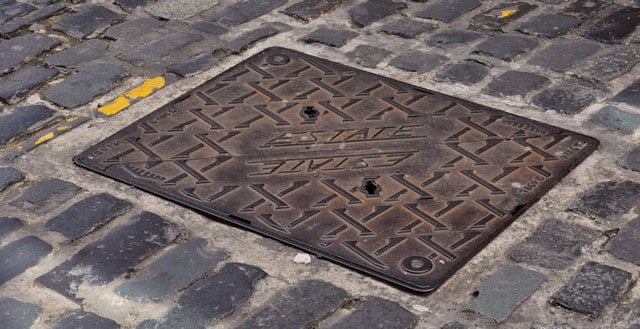
Of all the technical difficulties that can incur with a residential – or commercial, for that matter - building project, drainage is a pretty big one. In fact there is a whole list of government guidelines covering extensions whose foundations either come into contact with, or are near, drainage.
One quick and efficient way to find out if there’s underground drainage on your property, and whether or not it will have an effect on the design of your planned extension, is to simply contact your local water board.
As well as having maps of your property, your street and town that you can freely consult, and where the location of sewers should all be clearly highlighted, they will also have staff on hand to answer queries. For a further exploration you can check the depth and condition of any drains by hiring a company with specialist CCTV equipment.
Different Types Of Drainage To Consider
The government guidelines differentiate between two types of drainage – foul and surface water. It’s not enough to say one is underground drainage and the other above ground since both foul and surface water have elements of each. Briefly though:
- Foul water drainage tends to involve water coming from sinks, baths, washing machines and toilets etc. It’s the underground pipes that are referred to as ‘foul’. The above ground pipes are known as ‘sanitary.’
- Surface water drainage is the guttering on the roof and down the side of your house. This above ground drainage is known as roof drainage and underground it is referred to as surface water drains and sewers.
When You Can Usually Build Over Drainage
You can usually build over drainage in the following circumstances:
- If the pipe work and drain is within the boundary of your home and serves only your residence then you don’t have to ask for permission to build from your local water board.
- If the pipe you want to build over is a public drain (i.e. shared with a neighbour) and the pipe is 150mm diameter or less. You will however need permission to build over any public drain. For pipes larger than 150mm you would need to discuss the options with the water authority.
When It Gets Problematic To Build Over Drainage
- If the drainage pipework is particularly deep. Some drains are 3 or 4m below ground. Your foundations will always need to be deeper than the drainage so this may result in expensive piled foundations.
- Some drainage is pressurised. You cannot build over a pressurised pipe.
- You cannot build over large diameter pipework and it is usually uneconomical to divert it.
- Sometimes there is not enough fall available to divert the pipes and retain the minimum gradients
- You cannot divert pipework outside of your boundary without the landowners permission
- If you are building boundary to boundary and have no position for a manhole then you cannot retain your connection to the public sewer. You are not allowed internal manholes on a public sewer.
- The type of specification that needs to be adopted if pipe work has to be diverted can be found in the government’s Approved Document H.
Expert Advice From Experienced Architectural Designers
At BDS Architecture we undertake a wide range of bespoke home renovation projects, all of which are carried out via detailed consultation with clients. You can find out more information on home architecture and extensions by taking a look through the pages of our main website BDS Architecture. If you’re serious about a home extension then do take the time to check out free downloadable publication The Ultimate Guide To Expanding Your Living Space right here for inspiration and advice.






